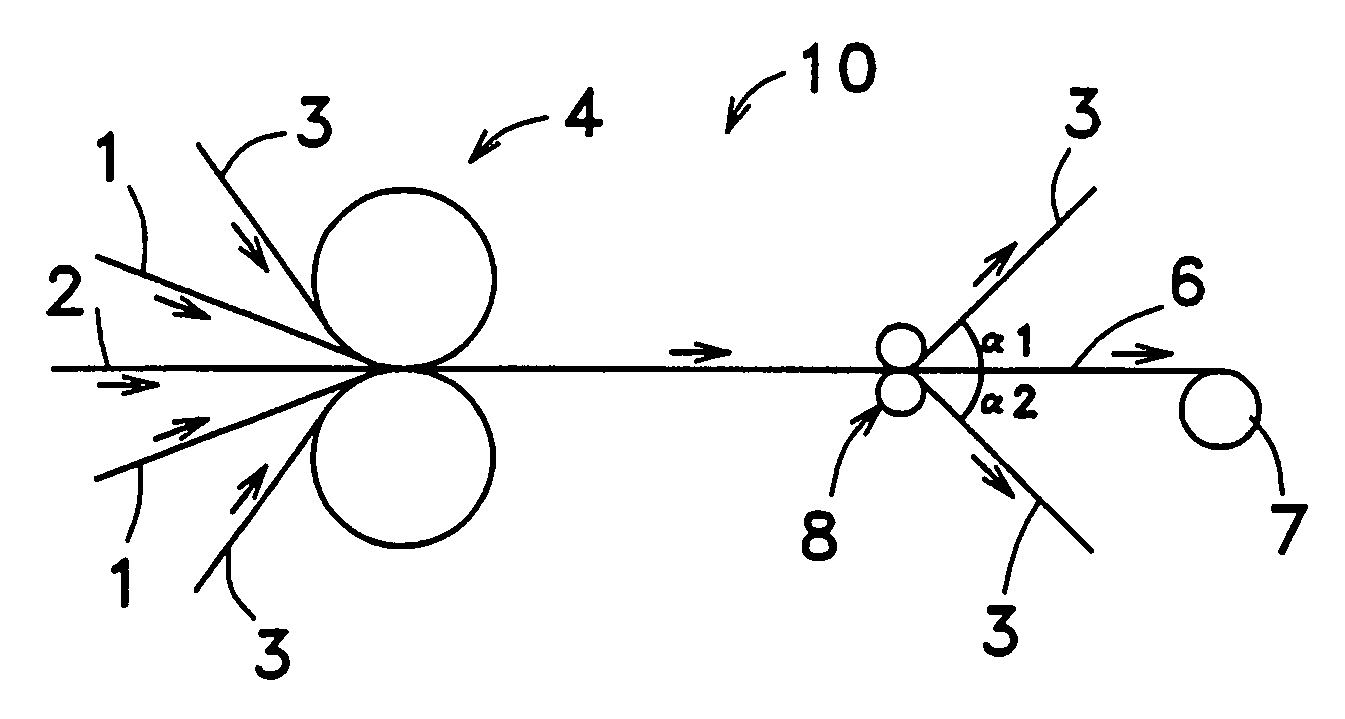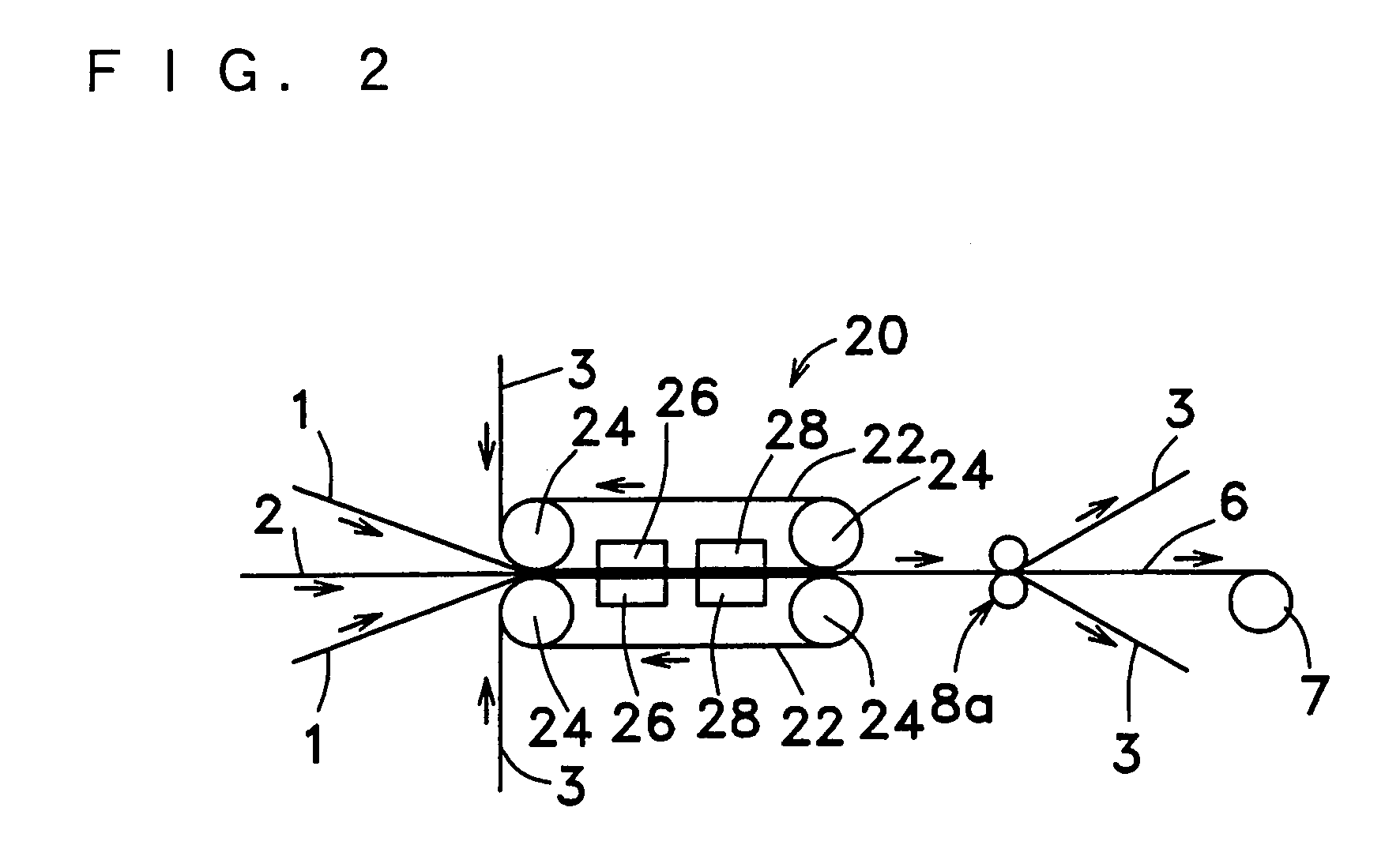Method and device for manufacturing laminated plate
a technology of laminated plates and manufacturing methods, applied in the directions of packaging, transportation and packaging, labelling, etc., can solve the problems of insufficient heat resistance of conventional epoxy resin and acrylic resin adhesives, inability to heat fusion, and easy appearance of wrinkles on processed laminates
- Summary
- Abstract
- Description
- Claims
- Application Information
AI Technical Summary
Benefits of technology
Problems solved by technology
Method used
Image
Examples
example 1
[0110]A laminating material was prepared by superimposing electrolytic copper foils having a thickness of 18 μm on both sides of a thermoplastic polyimide film having a thickness of 25 μm whose Tg is 190° C. (PIXEO TP-T produced by KANEKA CORPORATION). In addition, 125 μm-polyimide films (Apical 125AH produced by KANEKA CORPORATION) were superimposed on both sides of the laminating material as protective films. The laminating material was thermally pressured (temperature: 260° C., processing rate: 0.5 m / min, linear pressure: 980 N / cm) by a thermal-press forming device 10 shown in FIG. 3 (b). And then the protective films were peeled off after cooling the laminating material bonded by thermal pressure and the protective films in closely contact with the laminating material to room temperature to prepare a flexible laminate.
[0111]As a result, a flexible laminate free from visual defects such as wrinkles was obtained.
example 2
[0112]A flexible laminate was prepared in the same manner as in Example 1 except that rolled copper foils having a thickness of 18 μm which had more possibility of wrinkles were used instead of the electrolytic copper foils used in Example 1.
[0113]As a result, a flexible laminate free from visual defects such as wrinkles was obtained.
example 3
[0114]A flexible laminate was prepared in the same manner as in Example 1 except that a double-belt press (temperature: 300° C., processing rate: 0.5 m / min, linear pressure: 980 N / cm) was used instead of the thermal-press forming device used in Example 1.
[0115]As a result, a flexible laminate free from visual defects such as wrinkles was obtained.
PUM
| Property | Measurement | Unit |
|---|---|---|
| Temperature | aaaaa | aaaaa |
| Percent by mass | aaaaa | aaaaa |
| Temperature | aaaaa | aaaaa |
Abstract
Description
Claims
Application Information
 Login to View More
Login to View More - R&D
- Intellectual Property
- Life Sciences
- Materials
- Tech Scout
- Unparalleled Data Quality
- Higher Quality Content
- 60% Fewer Hallucinations
Browse by: Latest US Patents, China's latest patents, Technical Efficacy Thesaurus, Application Domain, Technology Topic, Popular Technical Reports.
© 2025 PatSnap. All rights reserved.Legal|Privacy policy|Modern Slavery Act Transparency Statement|Sitemap|About US| Contact US: help@patsnap.com



